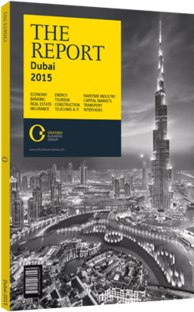More of Dubai's residents financing property purchases with mortgages
Although Dubai’s residential real estate market is dominated by cash buyers, mortgage transactions are on the rise amidst increasing demand. Between 2006 and 2014, mortgage volumes tripled, while in the 18 months leading up to March 2014, mortgages went up as a share of total real estate transactions, from 15% to 28%. By May 2014 mortgages accounted for 32% of total transactions, according to the Dubai Land Department.
These statistics reflect both the fundamental demand in the real estate market and the recovering health of the banking sector (see Banking chapter). Indeed, the UAE’s banking system is picking up after a long recovery from Dubai’s post-crisis slump. In November 2013, Moody’s Investors Service changed the outlook for the banking system from negative to stable because of “continued improvements in the operating environment, as well as the ongoing recovery of the local real estate market, which Moody’s believes will lead to a decline in problem loan levels and an increase in profitability over the next 12 to 18 months”.
The asset quality across the sector has been gradually improving. The non-performing loan ratio for the system as a whole fell from 10.5% at the end of 2012 to 9.5% at mid-year 2013. Moody’s expects this to fall to between 8% and 9% for its outlook period through 2014. Therefore, while banks have not been revisiting the lending levels of 2008, their exposure to the real estate sector has been growing substantially. According to the Central Bank of the UAE, lending to the real estate sector outperformed overall loan growth by one percentage point in 2013, increasing at a little over 10%.
Managing Risk
A number of measures should mitigate risk and help banks price loans competitively. In May 2014 the federal government approved the bylaws for the launch of a national credit bureau. Such an institution will allow banks to access information on consumer credit history across multiple institutions. As of May, the new Al Etihad Credit Bureau had gathered as much as 24 months worth of data from 70 credit data providers. This should help banks build a better picture of creditworthiness and keep the cost of borrowing under control. The central bank has also taken measures to limit exposure, announcing a new mortgage cap in October 2013. Under the new regulations, the loan-to-value ratio for first-time mortgages on properties worth less than Dh5m ($1.36m) was set at 80% for nationals and 75% for expatriates. Furthermore, the maximum loan maturity was restricted to 25 years and must be repaid by the age of 65 for expatriates and 70 for nationals, and the payment-to-income ratio was set at 50% of an applicant’s monthly income.
New Norms
While such measures are likely to dampen demand to some extent, they should reduce the risk attached to the banking sector’s loan book. The development of a secondary market would support growth by enabling banks to tap long-term funding for their mortgage issuance. In 2011 the Dubai International Financial Centre conducted a feasibility study to create a mortgage bond market based on the Danish model, although this has yet to be launched locally.
Another impediment to growth moving forward could be mortgage interest rates, which are at a historical low, hovering around the 4% mark, making borrowing particularly attractive and improving the affordability equation for potential homeowners. However, experts warn the rate may soon begin to rise due to the global economic recovery and UAE inflation creeping upwards. “Rates could rise much faster than in the US, despite the dollar peg,” Warren Philliskirk, an associate director at Mortgage International Business Dubai, told local newspaper The National in September 2014. “It wasn’t that long ago that local banks were charging mortgage rates of 8.5% – double US rates.”
Stricter regulations may lead to diminished interest in mortgages, and buyers and sellers alike will thus have to keep potential interest rate hikes in mind as they plan for the future. Even in light of these potential hurdles, however, the rising popularity of mortgages as a tool to finance property purchases does not look likely to be significantly dampened in the near future.
You have reached the limit of premium articles you can view for free.
Choose from the options below to purchase print or digital editions of our Reports. You can also purchase a website subscription giving you unlimited access to all of our Reports online for 12 months.
If you have already purchased this Report or have a website subscription, please login to continue.

